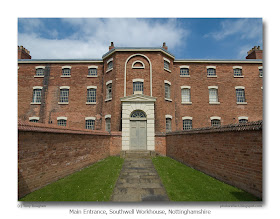click photo to enlarge
 There is often something of Candide to comments people make about living in a developed country in the 21st century, with many feeling that "all is for the best in the best of all possible worlds." So, it is a surprise, but also refreshing, to come across a piece that not only recognises the benefits of modern life, but also looks at its downside and reminds us of some of the things that we have lost in arriving at our present state of grace. In a recent presentation at the Hay Festival David Boyle and Andrew Simms of the New Economic Foundation did just this.
There is often something of Candide to comments people make about living in a developed country in the 21st century, with many feeling that "all is for the best in the best of all possible worlds." So, it is a surprise, but also refreshing, to come across a piece that not only recognises the benefits of modern life, but also looks at its downside and reminds us of some of the things that we have lost in arriving at our present state of grace. In a recent presentation at the Hay Festival David Boyle and Andrew Simms of the New Economic Foundation did just this.Looking past the short life spans, terrible medical and dental care, lawlessness, etc. of the twelfth century they listed some of the areas where that period in history bettered our time. They commented on the "debt-free living", frequent holidays, lack of a work ethic, the concept of a "just price" for goods, and much else. A small farmer, they calculate, could have a comfortable existence (in twelfth century terms) on 195 days work, leaving 170 days available for holidays. By 1564 the farmer would need to work 280 days. Thereafter the amount of free time for people has declined to the point where today most families need two full-time workers with relatively short holidays if they are to support a home and family. If our world is to maintain its population at a level that is fair and sustainable then thinking of this sort needs to enter the mainstream discussion of economics.
I was thinking about this when I was deciding which photograph to post from my recent collection. This image of Southwell Workhouse's main entrance seemed to be a useful partner for my thoughts. It dates from 1824, derives some of its form from ideas about prison architecture, and became something of a model for those wanting to spend less on the deserving and undeserving poor of parishes during the early nineteenth century. It has been restored by the National Trust and is open to the public. The building is not without interest, but I can't help but feel that the Trust needs to spend some money on displays to better explain, and to fill, its endless series of small rooms.
This earlier blog post was taken in the room behind the front door.
photograph & text (c) T. Boughen
Camera: Olympus E510
Mode: Aperture Priority
Focal Length: 11mm (22mm/35mm equiv.)
F No: f6.3
Shutter Speed: 1/800
ISO: 100
Exposure Compensation: -0.7 EV
Image Stabilisation: On